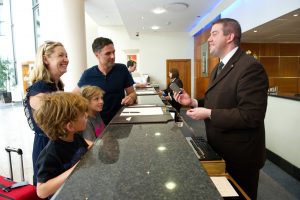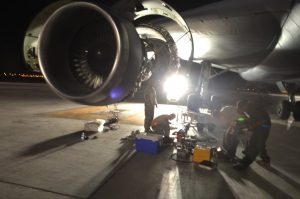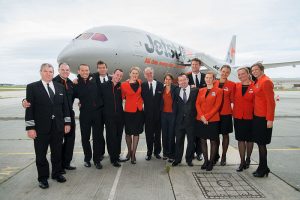AI/ML
5 Ways AI in Travel and Hospitality is Bringing Disruption
AI is revolutionising every industry, and the travel and hospitality industries are no exception. With greater focus on how to better traveller experiences, while simultaneously increasing business for owners, AI is proving remarkably useful.

Despite the excitement around AI, there can be no doubt that AI adoption in tourism and across industries is in its infancy. However, that hasn’t stopped businesses across the world from leveraging its immense power.
Here are 5 exciting ways how AI is changing the travel and hospitality industries:
1. Revenue Management

Optimising product price and availability to maximise revenue is a key outcome of using data sciences and AI and hotel chains are making the best use of this particular ability of AI. Global chains like Marriott and AccorHotels illustrate how this is done. Their revenue management systems automatically consolidate large amounts of data from various sources to predict demand patterns. Their products (rooms, in this case) are priced accordingly.
AccorHotels in particular, uses a solution called OTA Insight which allows managers to choose from 3 modules, each designed towards a specific revenue management task.
2. Operational Analytics

Hotels typically run without a break for years. This means that the amount of data they have is huge, but it also goes without saying that all this data needs to be analysed/processed in real time.
Every aspect of a customer’s experience with the hotel needs to be analysed, reported and acted upon immediately. Solutions like iDashboards allow for extensive data sourcing, pattern analysis, and critical-area highlighting. This is done across churn analysis (how many guests start booking, but don’t complete them) to brand mentions on social media, where the solution will highlight negative mentions, poor guest experiences and so on.
3. Willingness to Pay (WTP)

On collecting and analysing data about consumer preferences, airlines are better able to understand their customer. They can predict not only what customers will prefer, but also what they are willing to pay for it.
This analysis also predicts when a customer is willing to pay the maximum price for a ticket, such as a few minutes/hours before departure. Under these circumstances, the system will automatically show them increased prices, while displaying lower prices at all other times – specifically, lower prices that have the highest probability of conversion. This is done across multiple routes, multiple price points, and departure times, and is always done in real time.
While this statistical data analysis was developed years ago, it is only today that it can be done at an individual level, and only by extracting precisely the right kind of data.
4. Airplane Maintenance

Airlines bear high costs due to malfunctioning equipment. This may range from the cost of fines, to delayed flights and also includes their reputation taking a hit when the news gets out in the market.
Using sensors deployed all along the aircraft, data is constantly collected on the plane’s health. While routine check-ups are conducted, certain issues are escalated to a higher authority when needed.
Shane Ballman, former manager of Maintenance Systems & Technology at AirTran Airways and CEO of AI startup SynapseMX, Inc has created a platform that uses historical and real time data to help maintenance crews make decisions faster. This lets crews understand if the incident happened for the first time, whether it can happen again or not, and if it does happen again, when it is likely to occur.
5. Crew Management

Assigning a working crew to an airline is a tough job. Each flight route requires pilots, serving crew, maintenance crew, ground control personnel, people managing baggage control, and other diverse workforce; couple this with various factors that need to be taken into account to deploy personnel. You also have to contend with factors such as work fatigue, travel exhaustion, and jet lag.
With the amount of big data generated by airlines, solutions like Crew Rostering have stepped up as an answer to these challenges. Crew Rostering has created bio-mathematical models that take into account flight plans, the crew required, and even the human conditions mentioned above.
Solutions like this ensure that a flight gets from A to B, but doesn’t compromise on the safety of their passengers or the health of their staff.
CONCLUSION
With such large strides being taken in the field of travel and hospitality on the back of AI, one can only wait and watch how AI will up the ante and make newer and more meaningful interventions in this domain.
At Innovify, we are always riding the cusp of new tech-waves. We are currently riding the AI trend and keeping track of its applicability across various domains. If you find you need a strategic partner to leverage AI’s infinite potential to empower your travel and tourism services, look no farther than us.
You can contact us here. With Innovify, you won’t just get a vendor to execute your idea, but a strategic partner who will be with you every step of the way.




